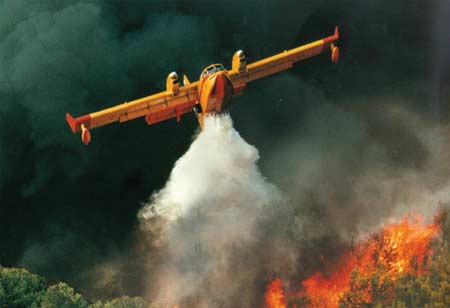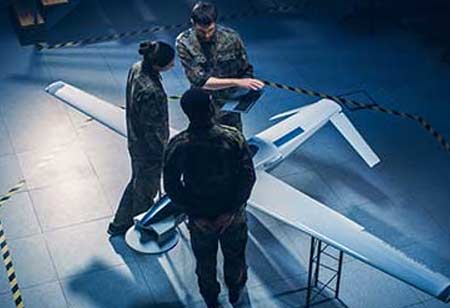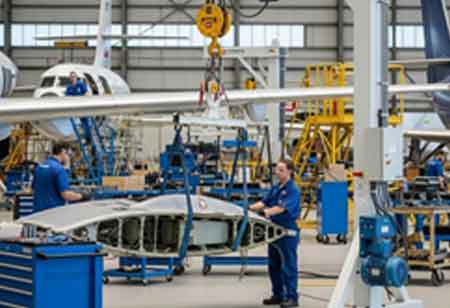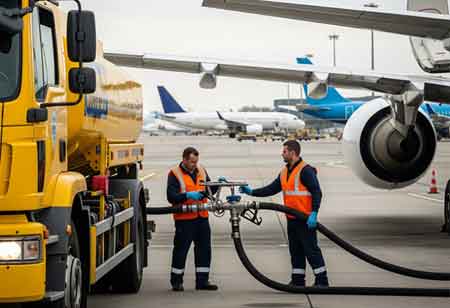Aerial firefighting is critical in managing and mitigating the destructive effects of wildfires, particularly in regions where conventional ground-based firefighting methods are limited or ineffective. As the frequency and intensity of wildfires increase due to environmental changes, the necessity for innovative firefighting strategies and advanced technologies becomes increasingly paramount.
The field of aerial firefighting has evolved into a high-tech domain that incorporates various aircraft, sophisticated systems, and specialized tools to exert rapid and effective control over fire incidents. Furthermore, the industry is actively embracing new trends that enhance firefighting capabilities while addressing and minimizing the environmental and operational challenges inherent in these efforts.
State of the Aerial Firefighting Industry
The sector is experiencing significant growth due to increasing wildfire frequency and intensity spurred by climate change. Key trends shaping the sector include the growing reliance on advanced technology and innovation to improve firefighting effectiveness. Unmanned aerial vehicles (UAVs) or drones are being integrated into operations for real-time surveillance, mapping, and targeted fire suppression, enhancing precision and safety. Drones are also used to access areas that are too dangerous for manned aircraft, providing critical data and support during complex fire events.
Another emerging trend is the development of hybrid-electric and fully electric aircraft. These aircraft are expected to reduce operational costs and carbon emissions, aligning with global sustainability objectives. There is a rising focus on using eco-friendly fire retardants and suppressants to minimize environmental impact, with many companies researching biodegradable and non-toxic alternatives.
Key Challenges and Their Solutions in Aerial Firefighting
One of the primary challenges in aerial firefighting is the ability to operate effectively in complex and changing environmental conditions. Wildfires often occur in rugged terrains, dense forests, or urban interfaces, which make it difficult for aircraft to reach the fire zones and accurately deliver suppressant materials. Weather conditions such as high winds, smoke, and extreme heat can significantly hinder operations, making precise navigation and dropping of fire retardants challenging. Technological advancements such as GPS-guided systems and improved aerial mapping are being utilized to address this.
These innovations allow pilots to identify fire boundaries more effectively and determine the best flight paths, ensuring the accurate application of firefighting agents. Collaboration between meteorologists and firefighting teams is increasingly vital for predicting weather patterns and providing real-time data, which helps adjust strategies on the fly, minimizing risks and maximizing effectiveness.
Another challenge lies in the maintenance and readiness of the aircraft. Aerial firefighting requires specialized aircraft, which must be kept in peak operational condition to respond when needed rapidly. The high operational tempo and demanding nature of firefighting missions often result in wear and tear on the aircraft, leading to longer downtimes and higher maintenance costs.
The industry has turned to predictive maintenance systems, which monitor the health of key components in real-time and allow for proactive repairs before a failure occurs. This solution helps to ensure aircraft are available when needed most and reduces downtime, thus improving overall mission success rates. Manufacturers are focusing on building more durable and versatile aircraft that can handle harsh firefighting conditions, which decreases maintenance costs and extends the fleet's lifespan.
The shortage of skilled personnel, including pilots, technicians, and support staff, is another ongoing issue. Aerial firefighting requires a highly trained workforce with expertise in operating aircraft in hazardous environments. As the demand for aerial firefighting increases, the need for experienced professionals grows, leading to concerns about shortages in qualified personnel.
Addressing this challenge involves enhanced training programs that simulate real-life firefighting scenarios, incorporating advanced flight simulators and hands-on experience in firefighting situations. Collaborations between government agencies, private contractors, and educational institutions are designed to create pipelines for future workforce development, ensuring that personnel are well-prepared and capable of handling the complex nature of aerial firefighting operations.
Growth Opportunities and Technological Advancements
The aerial firefighting industry offers numerous growth possibilities fueled by technological advances and a commitment to sustainability. One substantial advancement is the integration of unmanned aerial vehicles or drones in firefighting operations. UAVs provide a unique advantage by allowing real-time aerial surveillance, mapping, and thermal imaging of wildfire activity. These drones can fly at lower altitudes and into more hazardous areas where manned aircraft may not be able to operate safely. Drones can also drop smaller quantities of water or fire retardants with precision, complementing the efforts of larger aircraft and allowing for a more flexible response to fire spread.
There is a growing opportunity to develop more efficient and eco-friendly fire retardants and suppressants. Traditional fire retardants can harm the environment, especially water sources and soil. In response, researchers focus on biodegradable and non-toxic alternatives that break down quickly after use, reducing their ecological impact. This shift allows the industry to improve firefighting effectiveness while promoting environmental stewardship.
The shift toward electric and hybrid aircraft also presents significant opportunities for innovation within the aerial firefighting sector. The growing interest in electric aviation technology has led to the development of hybrid-electric aircraft that incorporate the advantages of electric propulsion with the reliability of traditional fuel-based systems. These hybrid aircraft are expected to reduce fuel consumption and emissions while increasing operational efficiency.









